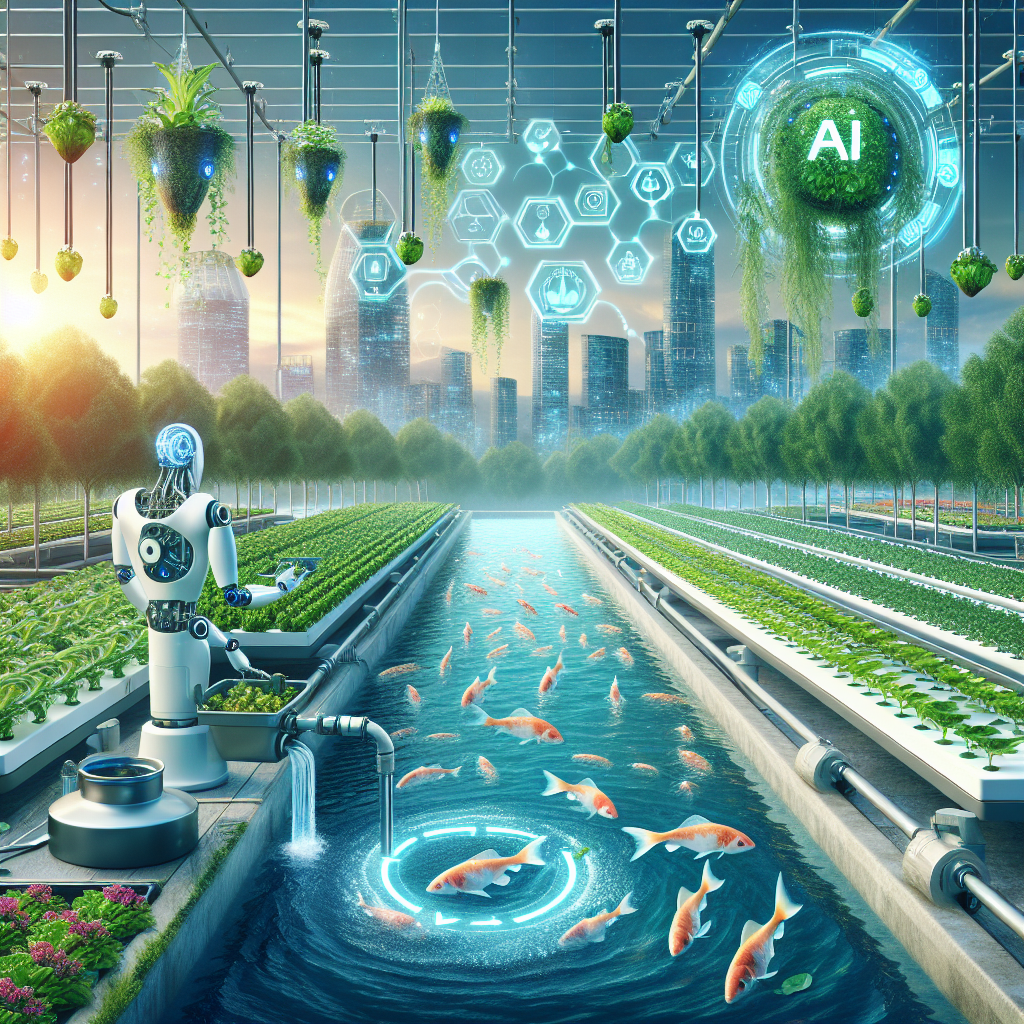Advancements in AI Technology for Sustainable Aquaponics and Hydroponics
Aquaponics and hydroponics are two innovative methods of sustainable agriculture that have gained popularity in recent years. These systems allow for the efficient and environmentally friendly production of food by combining aquaculture (raising fish) with hydroponics (growing plants in water). By utilizing AI technology, these systems can be further optimized to increase efficiency, reduce waste, and improve overall sustainability.
AI technology has the potential to revolutionize aquaponics and hydroponics by providing real-time data analysis, predictive modeling, and automated control systems. This allows for more precise monitoring of environmental conditions, nutrient levels, and plant growth, leading to higher yields and healthier crops. In this article, we will explore some of the advancements in AI technology that are being used in aquaponics and hydroponics, as well as the benefits of incorporating AI into these systems.
Benefits of AI Technology in Aquaponics and Hydroponics
1. Increased Efficiency: AI technology can analyze data from sensors and cameras to optimize the use of resources such as water, nutrients, and energy. By monitoring environmental conditions and plant growth in real-time, AI systems can adjust parameters such as water flow, lighting, and nutrient levels to maximize efficiency and minimize waste.
2. Improved Crop Quality: AI technology can help to identify and address issues such as nutrient deficiencies, pests, and diseases early on, leading to healthier plants and higher-quality crops. By continuously monitoring plant health and growth patterns, AI systems can provide recommendations for adjustments to optimize growing conditions.
3. Reduced Environmental Impact: By optimizing resource use and minimizing waste, AI technology can help to reduce the environmental impact of aquaponics and hydroponics systems. AI systems can also help to reduce the use of chemical fertilizers and pesticides by providing more targeted and precise solutions for plant health.
4. Increased Yields: By fine-tuning growing conditions based on real-time data and predictive modeling, AI technology can help to increase crop yields in aquaponics and hydroponics systems. By optimizing nutrient delivery, lighting, and other factors, AI systems can help to maximize plant growth and productivity.
Advancements in AI Technology for Aquaponics and Hydroponics
1. Real-time Data Analysis: AI technology can analyze data from sensors, cameras, and other monitoring devices to provide real-time insights into environmental conditions, plant health, and system performance. By continuously monitoring key parameters such as water quality, nutrient levels, and temperature, AI systems can provide recommendations for adjustments to optimize growing conditions.
2. Predictive Modeling: AI technology can use historical data and machine learning algorithms to predict future trends and outcomes in aquaponics and hydroponics systems. By analyzing patterns in plant growth, nutrient uptake, and environmental conditions, AI systems can forecast potential issues and provide recommendations for preventive measures.
3. Automated Control Systems: AI technology can be used to automate control systems in aquaponics and hydroponics, allowing for more precise and efficient management of growing conditions. By integrating AI algorithms with actuators, pumps, and other components, systems can be automatically adjusted based on real-time data and predictive modeling.
4. Smart Sensors and IoT Integration: AI technology can be integrated with smart sensors and Internet of Things (IoT) devices to provide more comprehensive monitoring and control of aquaponics and hydroponics systems. By connecting sensors to AI algorithms, data can be collected and analyzed in real-time to optimize growing conditions and improve system performance.
FAQs
Q: How does AI technology improve efficiency in aquaponics and hydroponics systems?
A: AI technology can analyze real-time data from sensors and cameras to optimize resource use, adjust growing conditions, and minimize waste, leading to increased efficiency in aquaponics and hydroponics systems.
Q: What are the benefits of using AI technology in aquaponics and hydroponics?
A: Some benefits of using AI technology in aquaponics and hydroponics include increased efficiency, improved crop quality, reduced environmental impact, and higher yields.
Q: How does AI technology help to increase crop yields in aquaponics and hydroponics?
A: By fine-tuning growing conditions based on real-time data and predictive modeling, AI technology can help to maximize plant growth and productivity, leading to higher crop yields in aquaponics and hydroponics systems.
Q: What are some advancements in AI technology for aquaponics and hydroponics?
A: Some advancements in AI technology for aquaponics and hydroponics include real-time data analysis, predictive modeling, automated control systems, and integration with smart sensors and IoT devices.
In conclusion, AI technology has the potential to revolutionize aquaponics and hydroponics by providing real-time data analysis, predictive modeling, and automated control systems. By optimizing resource use, improving crop quality, reducing environmental impact, and increasing yields, AI technology can help to make these systems more efficient, sustainable, and productive. By incorporating AI technology into aquaponics and hydroponics, we can work towards a more sustainable and environmentally friendly future for agriculture.

